Funded by a grant from Nature | PBS, the My Garden of a Thousand Bees project aims to provide you with all the resources you need to make a native bee-friendly garden. Today, we’re talking nesting bees. Look for more stories and events in the coming months. A big thanks to our project partners, Native Nurseries of Tallahassee, the University of Florida / IFAS Leon County Extension, and the Florida Native Plant Society.

We’re thinking about native bees, and we’re going to start in a time and place where we see no bees at all. I’m talking about the Munson Sandhills in the winter. A few months earlier, this section of the Apalachicola National Forest was at the peak of the fall wildflower season. Plenty of bees out and about, then. Now, the wildflowers have turned to brown stalks and seedheads. The ground is littered with pine needles, and with the ground cover having died back, we can see fallen trees and branches more easily.
We see no bees, but they have everything they need to hide the winter away.
When we think pollinator gardens, we put a heavy emphasis on flowers. I know I love buying native plants and seeing the pollinators that visit them. But flowers are only one part of a bee friendly habitat.
“If you want to promote native bees,” Says Mark Tancig, Horticulture Extension Agent at the UF/ IFAS Leon County Extension, “habitat is the most important… providing them a place to live. The way we do that is we provide them with food, water, and shelter.”
Today, we’re going to talk about shelter, especially during those winter months. To give bees what they need to nest in our yards, we’re looking to mimic their natural habitats. Looking around the Munson Sandhills, what can we copy in our yards?
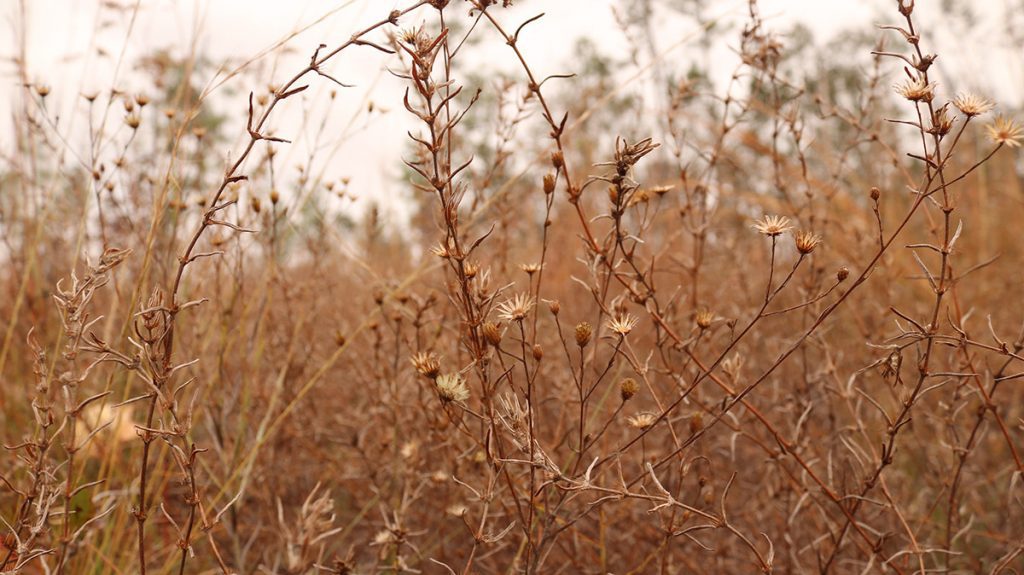
Embracing the Aesthetic of Dead Things (as much as you’re comfortable with)
“The first step for creating a bee friendly yard is observation.” Says Lilly Anderson-Messec, North Florida Program Director for the Florida Native Plant Society. She’s walking the Munson Sandhills with us, in the late summer. “Observing in natural areas like this one, what it looks like. What is part of the ecosystem?”
In the winter, and year round, really, this means dead plant material. And before we proceed, I want to take a second to talk about this. Because I know this is where a lot of folks lose interest. Some of us can embrace a wilder, sometimes shaggy look for our yards. One that resembles the natural spaces we like to visit. The natural spaces our homes replaced. Others of us like a more manicured landscape.
For those of us who fall into the latter category, I’d say that even if you can’t embrace a “wild yard” wholesale, that maybe you can set aside smaller wild spaces within your yard. Or incorporate branches and other decomposing material in creative ways. Any little bit helps our nesting bees.
Later on, Mark will show us how paths at the Extension office are lined with fallen branches, and how he hides brush piles. “Providing dead material in your landscape in a kind of attractive kind of way is a really good way to bring in native bees, [and] other insects, to try the best you can to make your landscape a living ecosystem.”
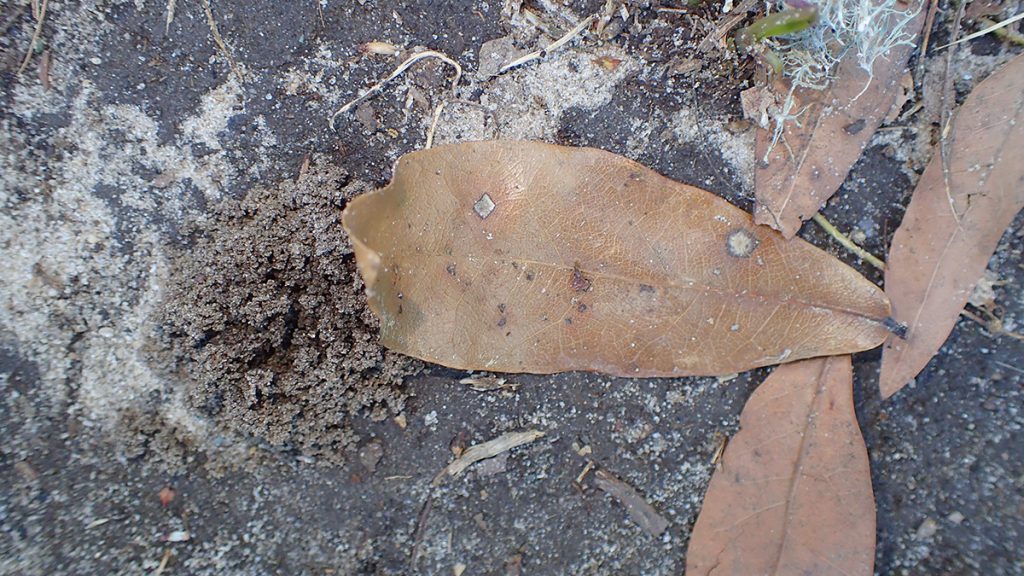
1. Helping the Ground Nesting Bees
So, what ideas can we get from the forest?
When we look out, we see what looks like wall to wall plants- trees, shrubs, wildflowers, and grasses. When we look down, though, we see that the plants have space between them. Compared to a turfgrass lawn, there’s actually a fair amount of exposed soil. Bare, exposed soil is key.
“It’s important to remember that a lot of our native bees, when you see them, it’s a short little part of their life cycle… where they’re out and about,” Mark says. “The rest of the time they’re spending in the ground.”
I talked to University of Florida entomologist Dr. Rachel Mallinger for this project. Her lab focuses on Florida native bees and their habitat needs. She says, “In terms of providing nesting resources, most bees nest below ground. So thinking about having ground that’s accessible and that’s not heavily disturbed is good for this ground nesting bees.”
This is where, if you’re not all in about having a wild yard, you can be strategic. Even if turfgrass covers large sections of your lawn, you might have plots where you can let the soil be exposed. Wildflower beds are one such place. Raised beds where you grow fruits and veggies are another. And maybe you have places where your grass becomes patchy, and you let it. If your yard is large enough, maybe there are wild spaces at the edges.
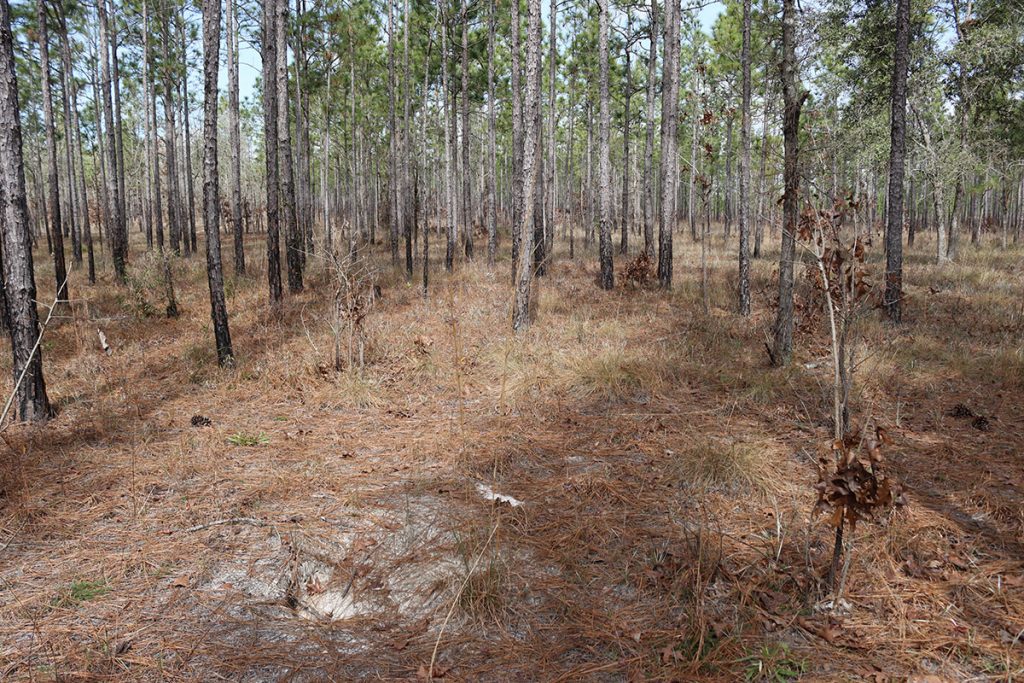
Plastic Lining, Weed Cloth, and Mulch
Dr. Mallinger recommends “having areas of your yard that don’t have a cloth or plastic barrier, or a really thick barrier of mulch.”
A lot of gardeners use mulch or lining around their plants to suppress weeds. Mulch made of wood chips can enrich soil over time, and can be used to line walkways through your garden. But thick mulch, like weed cloth, is a barrier to bees looking to dig a nest.
Walking through the Munson Sandhills, Lilly sees an alternative source for mulch.
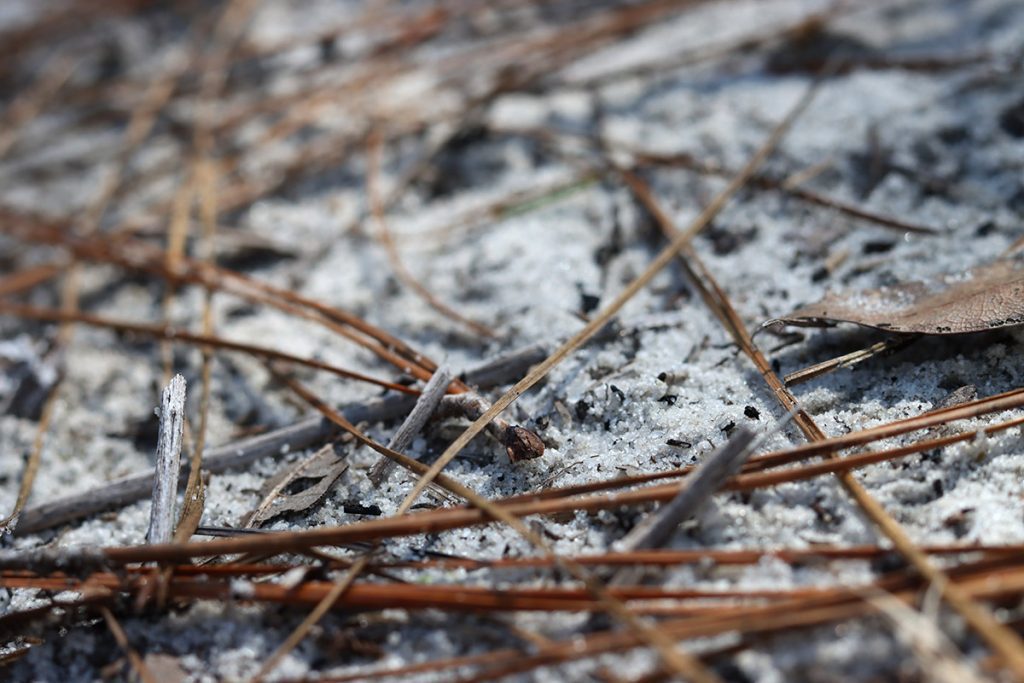
“You can still use pine straw like this as mulch,” She says, “and the insects can still move the pine straw and utilize the area. Pine straw is probably your best choice for mulch in your home garden because it’s sustainable, it is local, a renewable resource, and it’s a part of the natural ecosystems here.”
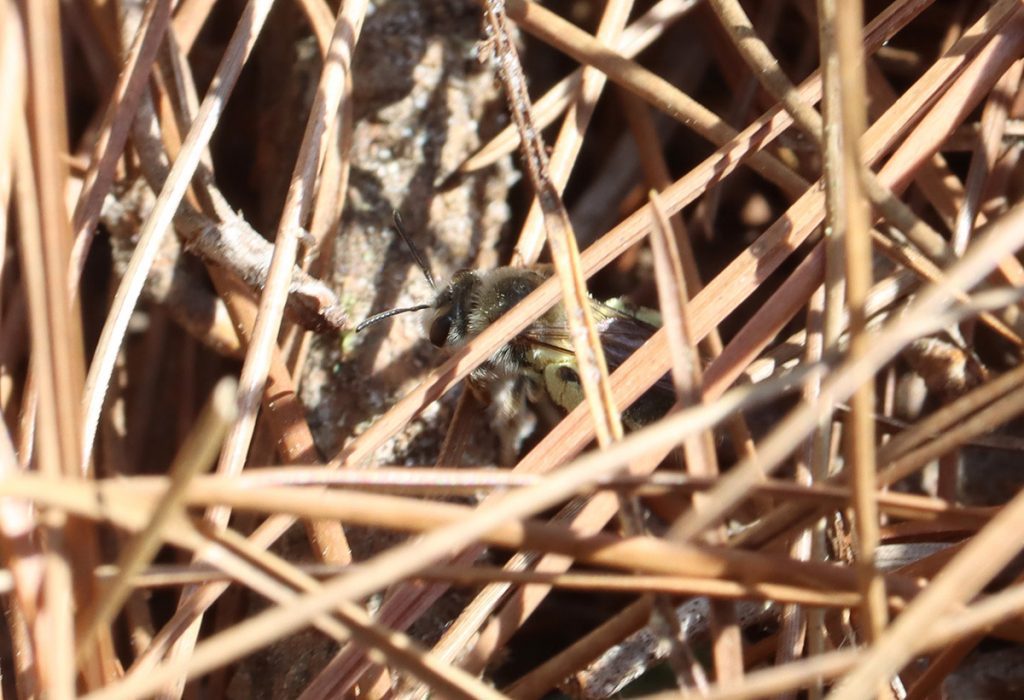
Lilly wants to dispel one myth that keeps people from using pine mulch.
“People worry about it creating too much acidity,” Lilly says, “but… that’s not right. You would have to use a whole lot of it for many years in order to make the soil much more acid. Acidity goes away really quickly.”
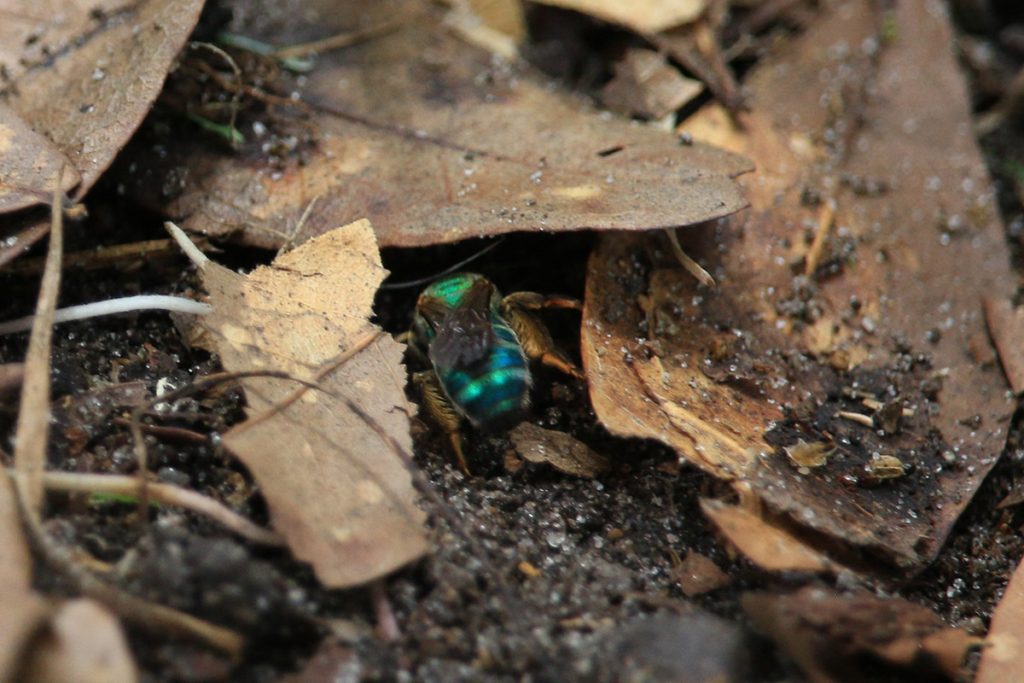
Just Leave the Leaves
Elizabeth Georges, an owner of Native Nurseries of Tallahassee, has another mulch idea. “Just leave the leaves. It’s considered brown gold, and you just want a light leaf litter on top of your beds. It also creates a lot of organic matter for the soil and really enriches your soil.”
I’ll go back to what Lilly said about observation, about “walking into your yard and in your neighborhood and seeing what type of habitat you already live in.”
Of course, in an urbanized area, you may not have the same kind of tree cover that had been there before humans developed it. In much of north Florida, though, many of us have homes with large yards and many trees, or that are near a natural area. Are you high on a hill where pine forests would have been, or on a slope or low lying area where we might have found deciduous hardwood forests? The trees on your property can provide you with a natural, renewable mulch source, whether it’s pine straw or leaf litter.
As Elizabeth mentions, this is as good for your soil as it is for your bees. Earlier this year, Mark explained to us how leaves in nature break down and add organic matter to the soil from which plants gather nutrients.
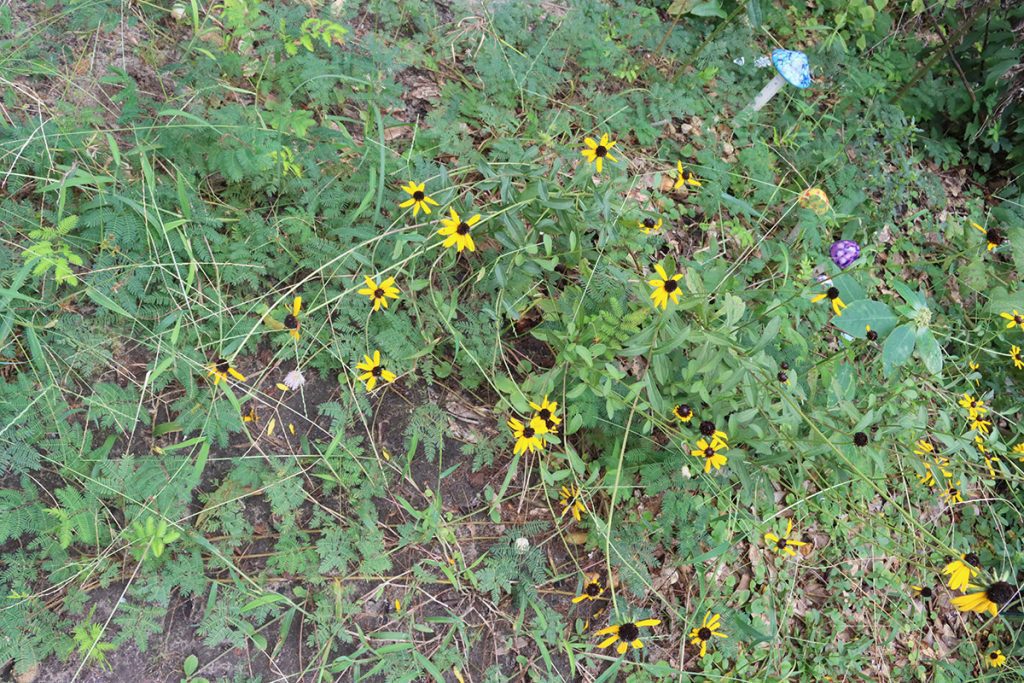
Groundcover Plants
Mark Tancig recommends against leaving too large an area of your yard bare, as soil not held together by roots can erode, washing away in the rain. And maybe you don’t like looking at bare earth or leaves on the ground.
There are native ground cover plants that can form a mini canopy over the ground, but which have stalks that are spaced apart. In the video there is a shot where we see orange coneflowers, sunshine mimosa, and fog fruit from above, and a little bit of exposed soil. I then cut to a ground level shot of the mimosa (not to be confused with the invasive mimosa tree) and fogfruit. Here, we see that there is plenty of soil for a bee to dig a nest.
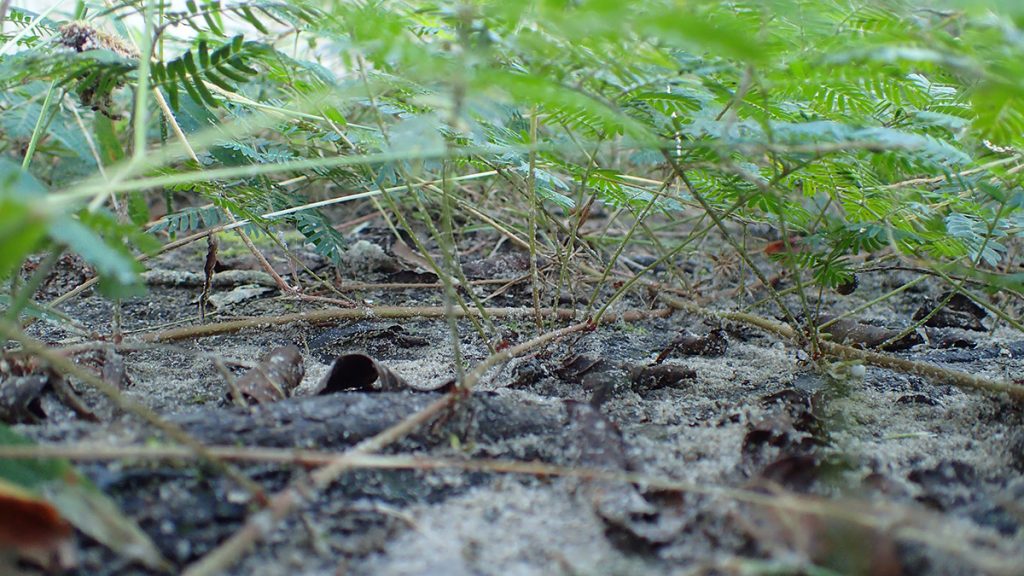
Elizabeth also recommends using native bunch grasses when landscaping your flower beds. Unlike turfgrass, which grows in mat, bunch grasses grow in clumps, which leaves more bare earth exposed. They can add visual variety to flower beds and feed a number of insects, including numerous butterfly species.
A few of of Elizabeth’s favorite bunch grasses are Elliot’s love grass (Eragrostis elliottii), chalky bluestem (Andropogon capillipes), purple top grass (Tridens flavus), and lopsided indiangrass (Sorghastrum secundum).
Leaving the Ground Undisturbed
Another thing to think about with ground nesting bees is how much you disturb the ground. Mark says it’s good to leave “a little space where you’re not going to be tilling, not going to be mowing often, not going to be walking through often.”
Not tilling, like leaving leaf litter, benefits the soil and the microbes and fungi in it that benefit plants. It will also keep you from tearing into a bee nest.
Use pesticides strategically or not at all
Mark walks us out to a lawn area adjacent to the Extension’s demonstration garden. Scanning the ground, he finds what he’s looking for: a fire ant mound.
“There’s various ways to control fire ants,” Mark says. “They’re not easy to get rid of.”
Fire ants are South American in origin, and have replaced many of our native ant species in human inhabited areas. They bite, and, unchecked, their mounds will pop up throughout your yard. And yet, removing them can harm a host of other beneficial insects living in the ground, including nesting bees.
“Something that some folks do, they’ll do a broadcast application of an insecticide over their whole lawn,” Mark says. “It’s just important to remember that those insecticides… are not specific just to fire ants. There’s a lot of other insects that they can harm.
“So the alternative if you want to help encourage bees or other pollinators or other insects… is to use spot treatments. So instead of applying something to the whole lawn, we’ll come right around this fire ant bed and we’ll put out a bait type product.”
Bait traps only kill the insects that take the bait and eat it, so it won’t affect pollinators such as bees (whose larvae are fed nectar and pollen), wasps (whose larvae are fed insects), and butterflies and moths (whose larvae eat plants).
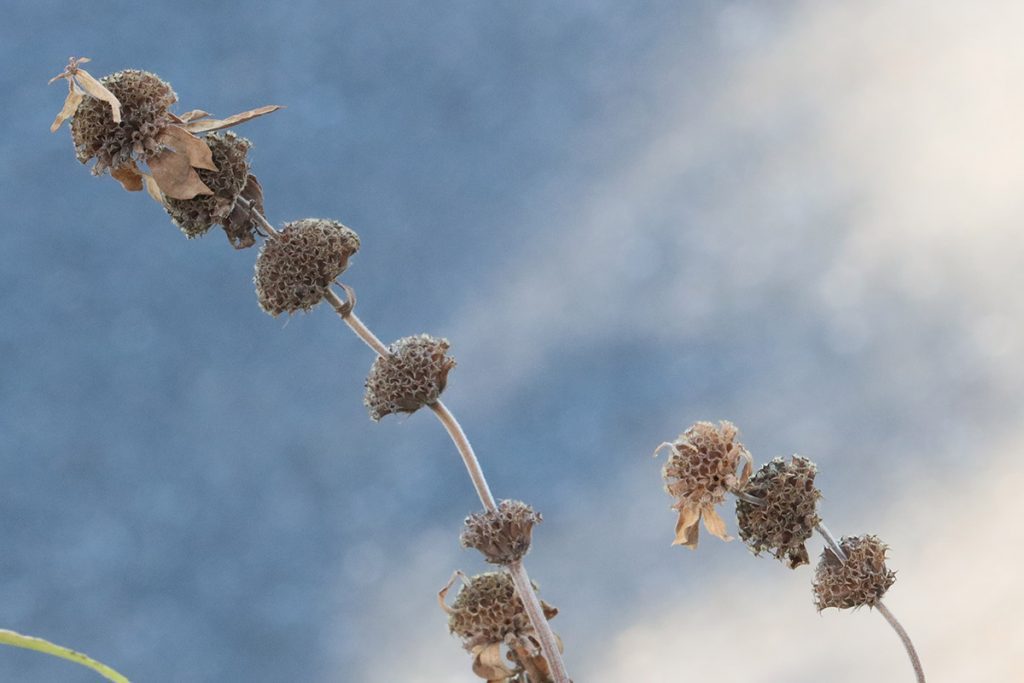
2. Don’t Deadhead Those Wildflowers
Let’s return to the dead looking landscape of the Munson Sandhills in the winter. Over the last few years, I’ve grown to appreciate wildflowers gone to seed in the forest. What once had been green, yellow, purple, and white is now brown and grey. The seedheads can be spiky, or soft and feathery, spreading by wind or on the coat of a wandering mammal.
It’s not a look that would occur to many of us to reproduce in our yards. But there is a benefit to those pollinators we want to see in the spring and summer, as certain species of bee nest in hollow stems.
“What I like to do is leave… dead stalks through the winter,” Elizabeth says, “typically cut them back late February, early March, when the new growth is just starting to emerge.”
Both Lilly and Elizabeth recommend a single mowing/ cutting back of wildflower patches a year. This would somewhat mimic a controlled burn in a longleaf forest, clearing out the understory and making way for new growth.
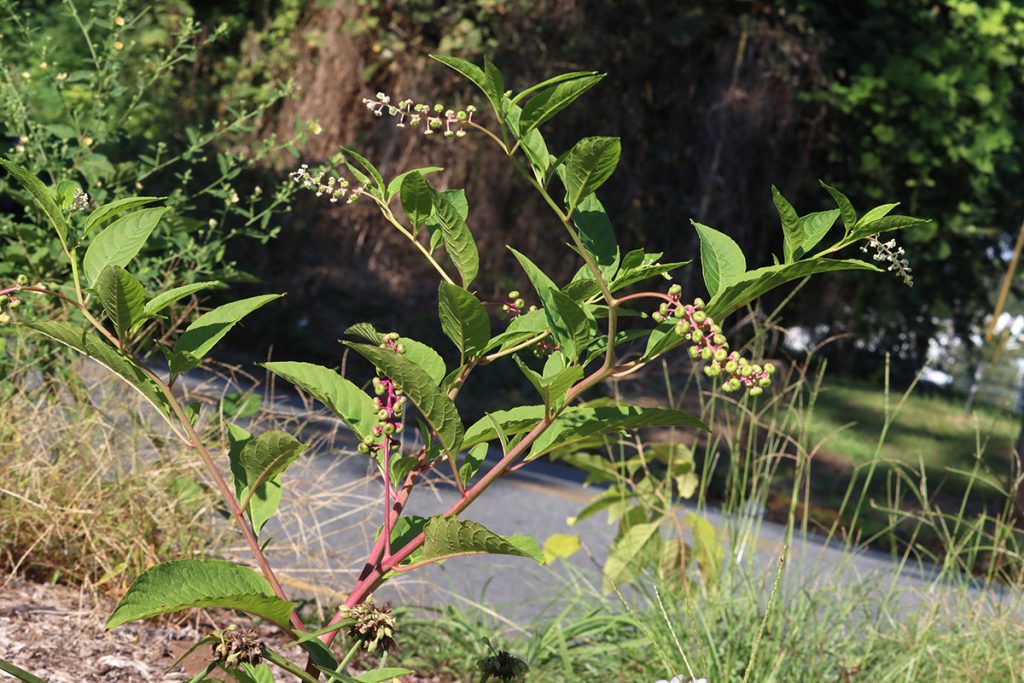
Certain plant species have stems/ branches especially suited for nesting bees. Says Elizabeth, “Our native bees will use the stems from plants like elderberry, pokeweed, even Monarda (Monarda punctata, dotted horsemint). They tend to nest in the stems.”
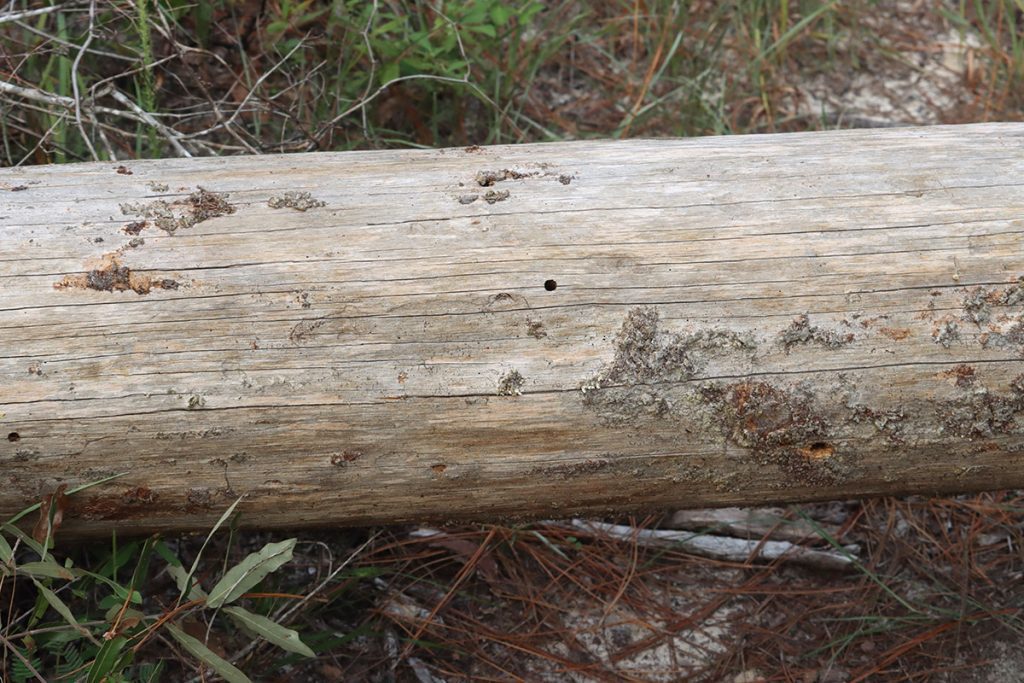
3. Dead Wood for Nesting Bees
In the winter, or in any time of year, we see fallen trees and branches in the forest. As dead wood becomes soft, any number of animals make use of it. Dead standing trees, known as snags, become nests for birds such as woodpeckers and nuthatches. A couple of years ago in these Sandhills, Dr. Bruce Means told us how eastern diamondback rattlesnakes like to hide under decomposing stumps. And there are bee species that will nest in decaying wood as well.
Carpenter bees are the best known wood boring bee, and many people consider them pests. Rachel Mallinger points out that carpenter bees nest in soft wood, and houses are typically constructed from hardwood. Soft wood is however used as trim in homes, and in porch railings, fences, and sheds. At my house they nest in railings and fence posts.
Dr. Mallinger points out that they are solitary nesters, so they aren’t likely to infest your wood. The more likely threat is woodpeckers tearing into your wood to get to the larvae.
One preventative measure you can take is to replace any decaying wood in your home or other structures.
Another is to provide natural alternatives for carpenters and other wood nesting bees:
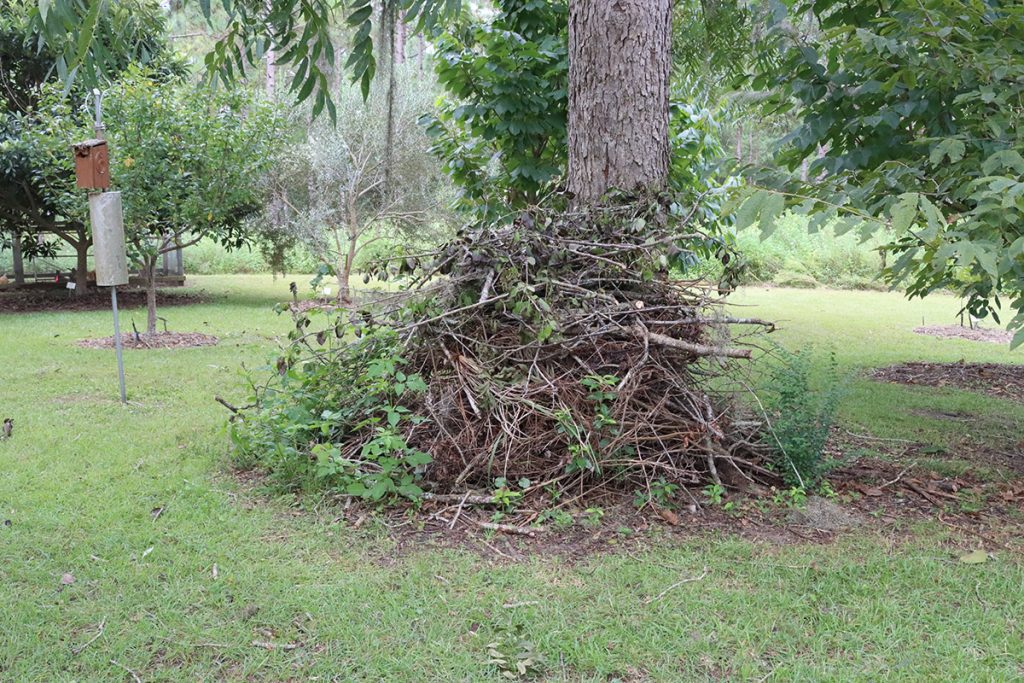
Brush Piles
“This is our brush pile. It is built upon with twigs and branches of all different sizes and shapes.” Elizabeth says. We’re standing by a brush pile the size of a small car at Native Nurseries. “Basically, any time we’re having to cut something back or prune up the anise or palmettos, I just bring it all to the brush pile.
“This is a magical spot for native bees and other invertebrates. Everything from skinks to mice to birds will come through. The twigs and branches offer homes for bees, solitary tunnel nesting bees. It also offers some exposed soil at the bottom for other ground nesting bees.”
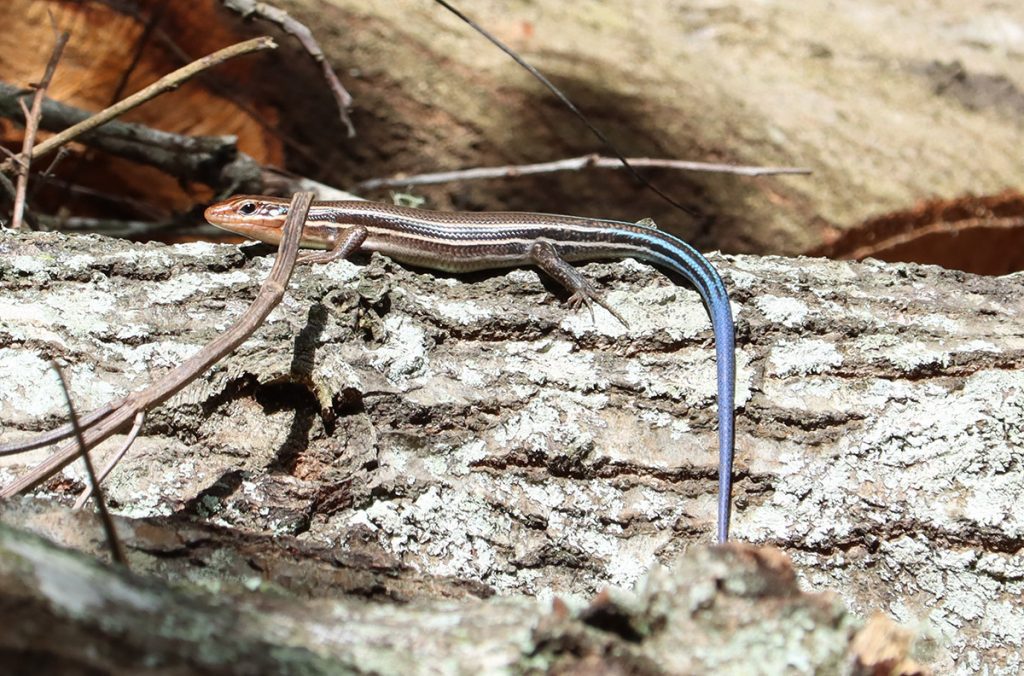
In the video, as Elizabeth says this, I show closeups of other brush piles. The image of the broadheaded skink is from my backyard. Earlier in the summer we lost an oak tree, and I laid a few large trunk segments over top of our pile. In July, we had a skink regularly perch on those oak segments, guarding a nest.
We also showed a couple of panning shots of another large brush pile, this one at the Leon County Extension Office. You can see Virginia creeper growing on it (Mark has previously shared the wildlife benefits of native vines with us), and can see how there is plenty of space for small animals to seek shelter.
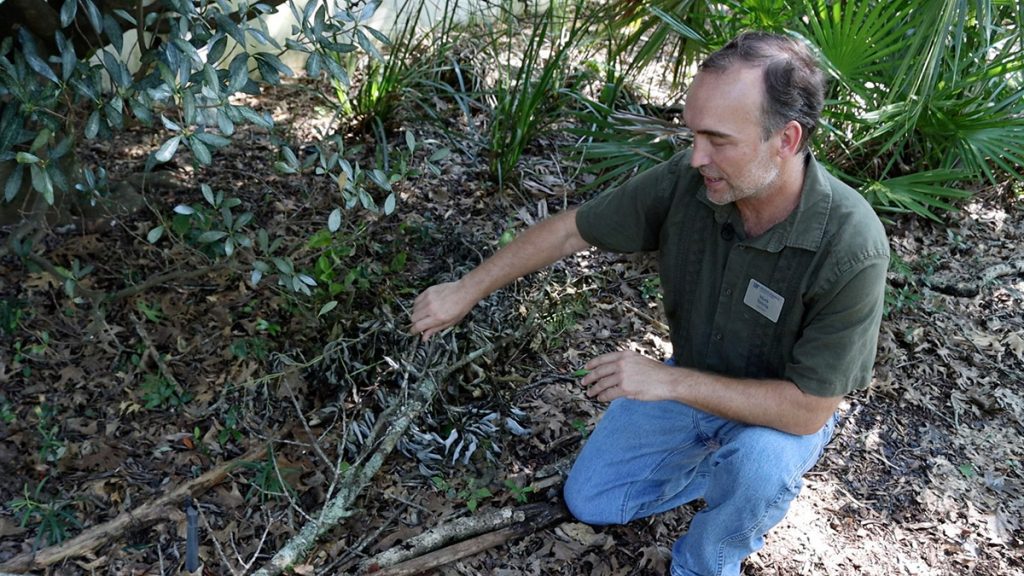
Dead Branches on Trees, and on the Ground
I can see where such a large brush pile isn’t for everyone. At the Extension Office, Mark shows us where they hide smaller brush piles in shady spots along their trails.
There, and at Native Nurseries, dead branches line walkways and flower beds. It’s a way to incorporate dead plant material in a decorative way, if you go for a more naturalistic aesthetic. And, as with fallen leaves, there is a benefit to your soil.
“It’s a great way to feed the microbes in the soil with this decaying wood matter,” says Elizabeth.
Dead wood doesn’t always fall to the ground right away. If it’s not an injury risk, Mark recommends leaving dead branches on trees, as bees will make use of them there. Tree stumps and even dead standing trees, called snags, provide soft wood for nesting bees and other wildlife.
As Elizabeth says, “One of the most important trees in the forest is a dead tree.”
Providing Water for Your Bees
Every animal needs to stay hydrated, and bees are no exception. I’ve already produced a segment with the Leon County IFAS Extension on creating a wildlife pond, which provides water for insects as well as larger animals. Extension Program Assistant Rachel Mathes used rocks of various sizes at the edge of the pond to give bees a place to rest and drink safely.
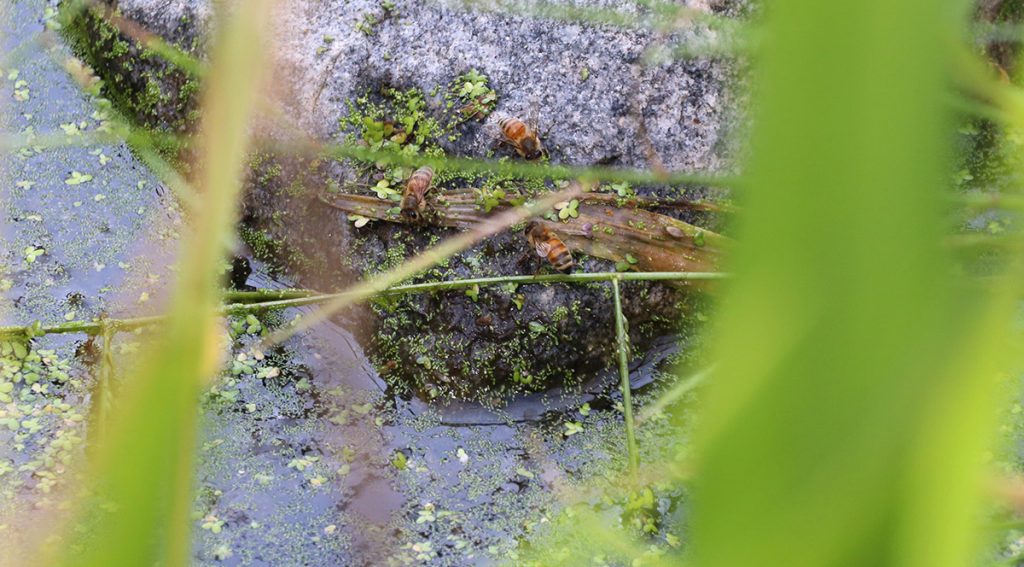
Many of the wet tolerant plants that line the pond produce flowers for our bees and other pollinators.
Not all of us have space for a pond, but we can make a bird bath bee-friendly by similarly placing rocks along its edge. One concern with a bird bath is of course mosquitos.
“How do we keep mosquitoes out of here?” Mark asks. “Well, you can dump it. But when you fill the bird bath with pebbles, it’s no fun to dump it out. And they have to put the pebbles back in every time. So something you can do is use a product called BTI.
“You’ll see it a lot [in the form of] mosquito dunks or… a little granular product that control mosquito larvae. The great thing about BTI is [that] it’s safe for your other pollinators. It’s safe for frogs, for lizards, for birds, for your other insects.”
What Else Can We do for Our Native Bees?
We’ve talked about shelter and water, and in our next bee segment, we’ll tackle food. That means flowers, and I know the gardeners out there will wan to hear the MANY plant recommendations our partners shared with us.
Check out our native bee gardening home page. It gathers in one place all of our content related to native bees and all that we can do to invite them into our yards. As we add new stories to the My Garden of a Thousand Bees project, we’ll add them there.
Keep an eye on that page for news about planting events around Tallahassee in early 2022. We’ll have seeds to share and our partners will share their pollinator gardening knowledge.
Again, this project is funded by a grant from Nature | PBS. On October 20 at 8 pm ET, WFSU will air Nature’s season premiere, My Garden of a Thousand Bees. It’s the story of a wildlife photographer stuck at home during the pandemic, who discovers the diverse world of wild bees in his garden. I can relate, and if you’ve read to the bottom of this post, I think maybe you can, too.
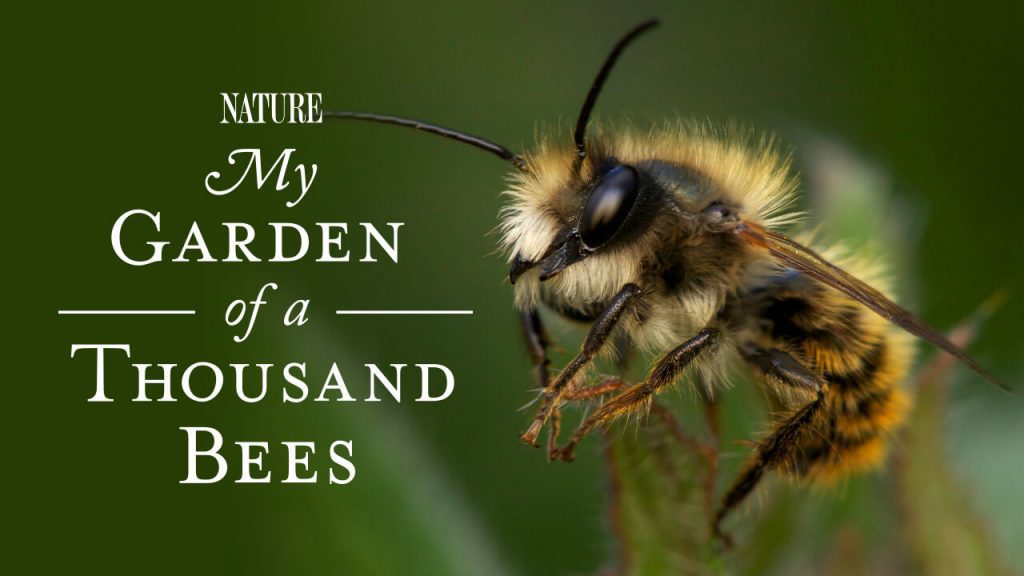
Support for Nature: My Garden of a Thousand Bees was provided by The Hite Foundation, Bradley L. Goldberg Family Foundation and The Sun Hill Family Foundation in memory of Susan and Edwin Malloy. Series funding for Nature is also made possible in part by the Arnhold Family in memory of Henry and Clarisse Arnhold, The Fairweather Foundation, Kate W. Cassidy Foundation, Sue and Edgar Wachenheim III, Kathy Chiao and Ken Hao, Charles Rosenblum, Filomen M. D’Agostino Foundation, Lillian Goldman Charitable Trust, Leonard and Norma Klorfine, Sandra Atlas Bass, Colin S. Edwards, Gregg Peters Monsees Foundation, Koo and Patricia Yuen, by the Corporation for Public Broadcasting and by public television viewers.
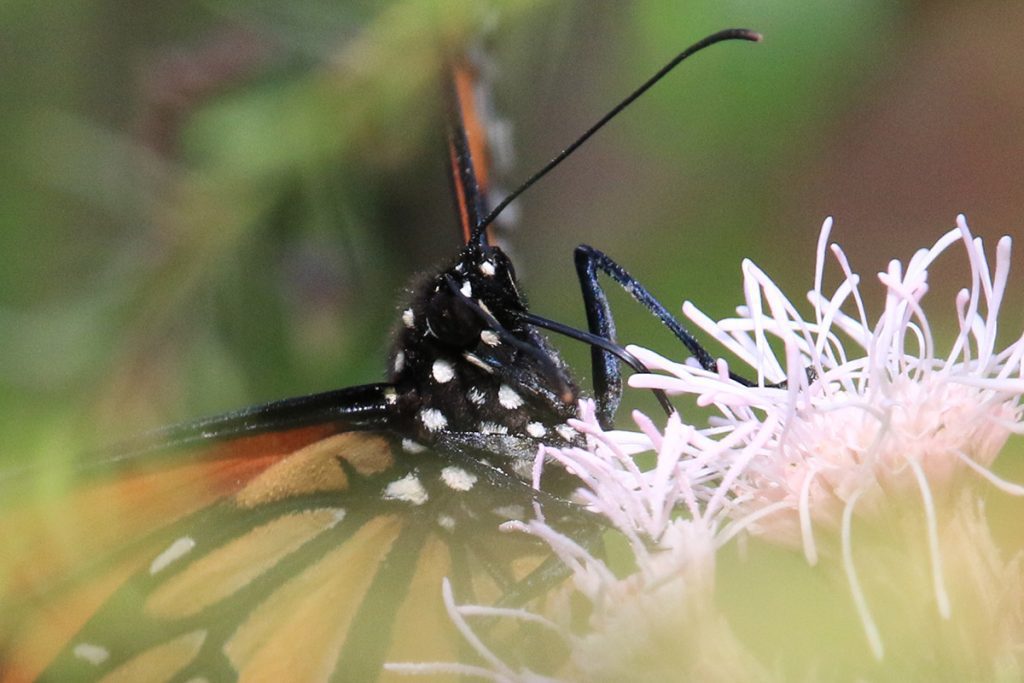
Dig Deeper into Backyard Ecology
What can we do to invite butterflies, birds, and other wildlife into our yards? And what about the flora and fauna that makes its way into our yards; the weeds, insects, and other critters that create the home ecosystem? WFSU Ecology Blog takes a closer look.
